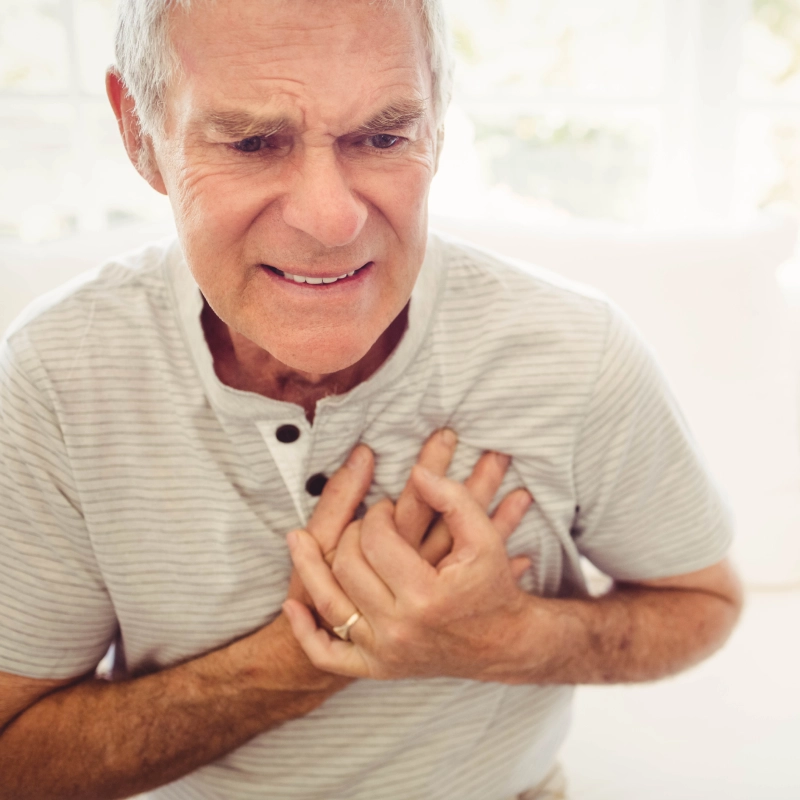
Cardiac arrest is a sudden and life-threatening emergency that occurs when the heart suddenly stops pumping blood effectively to the rest of the body. It is a critical condition that requires immediate intervention to save a person's life.
Understanding Cardiac Arrest
Cardiac arrest is different from a heart attack, although the terms are often used interchangeably. A heart attack occurs when blood flow to a part of the heart is blocked, leading to damage to the heart muscle. On the other hand, cardiac arrest happens when the heart's electrical system malfunctions, causing an irregular heartbeat (arrhythmia) that disrupts the heart's pumping action. This leads to an abrupt loss of blood flow to vital organs, including the brain.
Causes of Cardiac Arrest
Several underlying conditions can lead to cardiac arrest, including:
- Coronary Artery Disease (CAD): The most common cause of cardiac arrest is CAD, which occurs due to the buildup of fatty deposits (plaques) in the coronary arteries, reducing blood flow to the heart muscle.
- Heart Attack (Myocardial Infarction): A heart attack can trigger cardiac arrest by causing damage to the heart muscle and disrupting its electrical signals.
- Arrhythmias: Abnormal heart rhythms, such as ventricular fibrillation (rapid and chaotic electrical activity), can cause the heart to stop pumping effectively.
- Electrolyte Imbalances: Disturbances in potassium, magnesium, or calcium levels can affect the heart's electrical activity.
- Heart Valve Disorders: Structural abnormalities in the heart valves can disrupt normal heart function.
- Cardiomyopathy: Conditions that weaken the heart muscle can increase the risk of cardiac arrest.
- Drug Use: Certain medications, recreational drugs, or substances like alcohol can trigger arrhythmias leading to cardiac arrest.
- Electrical Shock: Severe electrical shock can disrupt the heart's electrical system.
Symptoms of Cardiac Arrest
Cardiac arrest often occurs suddenly and without warning. Common symptoms include:
- Sudden loss of responsiveness
- Absence of pulse or breathing
- Unresponsiveness to stimuli
- Sudden collapse
Treatment of Cardiac Arrest
Immediate treatment is crucial to improving the chances of survival in cardiac arrest cases:
- Call Emergency Services: Immediately dial emergency services (e.g., 911) to summon professional medical help.
- Perform CPR (Cardiopulmonary Resuscitation): Begin chest compressions to help maintain blood flow to vital organs. Place the heel of one hand on the center of the person's chest, then place the other hand on top and interlock fingers. Perform chest compressions at a rate of 100-120 compressions per minute.
- Use an Automated External Defibrillator (AED): If available, use an AED to deliver an electrical shock to restore the heart's normal rhythm. Follow the instructions provided with the AED.
- Administer Advanced Life Support: Emergency medical personnel will provide advanced cardiac life support (ACLS) interventions, such as intravenous medications and advanced airway management, upon arrival.
Prevention of Cardiac Arrest
While some risk factors for cardiac arrest, such as age and family history, cannot be changed, there are steps individuals can take to reduce their risk:
- Maintain a Healthy Lifestyle: Adopting a heart-healthy diet, exercising regularly, maintaining a healthy weight, and avoiding smoking can significantly reduce the risk of heart disease and cardiac arrest.
- Manage Underlying Health Conditions: Control high blood pressure, cholesterol levels, diabetes, and other cardiovascular risk factors through medication and lifestyle modifications.
- Seek Regular Medical Care: Attend regular check-ups with a healthcare provider to monitor heart health and detect any underlying conditions early.
- Learn CPR and Basic Life Support (BLS): Being trained in CPR and BLS can enable bystanders to provide immediate assistance in cardiac arrest emergencies, improving outcomes.
- Install AEDs in Public Places: Promote the widespread availability of AEDs in public locations, along with training on their use, to increase survival rates in cardiac arrest cases.
Conclusion
In conclusion, cardiac arrest is a critical medical emergency that requires immediate action and awareness. Understanding its causes, recognizing the symptoms, and knowing how to respond effectively can make a significant difference in saving lives. Prevention efforts focused on adopting a healthy lifestyle, managing underlying health conditions, and improving access to emergency care and interventions are essential in reducing the incidence and impact of cardiac arrest.

